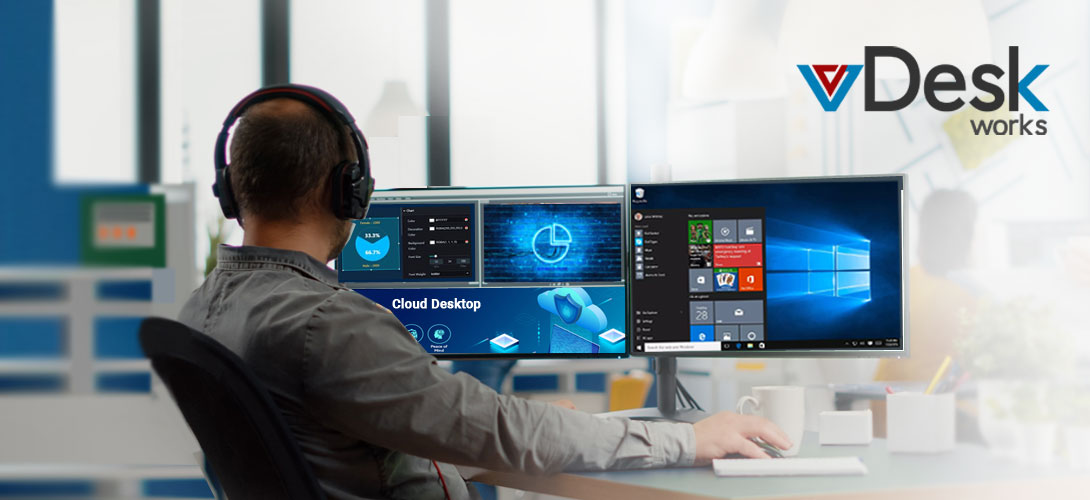An increasing number of businesses are already using cloud-based email, social media, and file-sharing services. With a monthly subscription fee typically far lower than their on-premise counterparts - not to mention the storage capabilities provided by ISPs offering 1TB+ of storage – it is no wonder more companies are jumping on board.
However, it is not just SMBs taking advantage of a move to the cloud. Microsoft's Office 365 product is increasingly being adopted by enterprise customers who want to take advantage of convenience and cost-savings without sacrificing their existing infrastructure.
What are Cloud Desktops?
Cloud desktops take advantage of the same principles to make computing more accessible. Rather than requesting a new desktop be provisioned every time you need to access a computer, a cloud desktop tool lets users log in to an existing virtual machine in the cloud. Therefore, when they are logged out, their sessions can be saved and later be used by other people. As well as enabling users to benefit from the features of a traditional desktop - such as storage, apps, and administrative rights - there can also be security benefits.
For example, if an employee has accidentally deleted some files their organization needs, they could log into another computer in the cloud with all their data intact.
There are various reasons why you should look into cloud desktops, including:
1. Greater convenience and security
As mentioned above, if employees can access their virtual desktop from anywhere, there is no need for the IT team to worry about resetting passwords or other similar processes that could leave your business open to vulnerabilities.
2. No software updates are required
Like a virtual machine, a cloud desktop is a packaged application that can be easily saved and restored. There is no need to install updates or reboot when it is time to update, which is especially important if you have users working remotely.
3. More affordable than traditional desktops
Many different solutions are on the market, but most cloud desktops are priced at around $20 per user per month. Purchasing these solutions is often more affordable than buying each employee a copy of Windows and Office, especially for larger organizations where software licenses are expensive.
4. No need to buy your own hardware
Most companies have some spare capacity within their existing servers or desktops, but most of this is likely wasted. Give your users access to a cloud desktop solution. They can take advantage of this spare hardware and reduce the need for additional servers and desktops in your office. Having virtual desktops can cut costs and eliminate any associated headaches.
5. Better access to information
If an employee has their laptop stolen, it is no longer necessary to wait for a replacement. Instead, most cloud desktop solutions allow employees to access their files and applications from any device with an internet connection.
There are many factors to consider when implementing a cloud desktops solution, but it's clear that there are many benefits both for the individual and their employer. It is the latest evolution of remote desktop solutions, and we can expect to see more and more businesses taking advantage of this approach.


 Emma Carson
Emma Carson
















